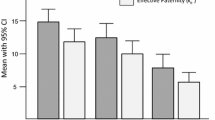Abstract
Using four polymorphic microsatellite loci, we found that four Apis andreniformis queens collected in Thailand each mated at least 10–20 times, producing an average relatedness, g ww, of workers of 0.30 ± 0.007, and an average effective number of matings of 9.1 ± 2.2. The degrees of polyandry and intra-colonial genetic relatedness in A. andreniformis are similar to those in A. mellifera, slightly more than in A. florea, and up to 6 times less than in A. dorsata. We argue that while presently favoured hypotheses for the evolution of polyandry in monogynous social insects may adequately explain the evolution of up to five or six matings, they are inadequate to explain the extreme polyandry (10–60 matings) observed in Apis. One alternative possibility is that colony fitness is a non-additive function of the fitness of individual subfamilies. Such behavioral over-dominance may mean that queen fitness is increased by high levels of polyandry, which increase the probability of desirable combinations of worker genotypes occurring in one colony. The special attributes of honey bees which may lead to behavioral over-dominance include colony aggregation (which may increase the incidence of disease), and frequent long-distance migration.
Similar content being viewed by others
Author information
Authors and Affiliations
Additional information
Received: 8 May 1996/Accepted after revision: 9 August 1996
Rights and permissions
About this article
Cite this article
Oldroyd, B., Clifton, M., Wongsiri, S. et al. Polyandry in the genus Apis, particularly Apis andreniformis . Behav Ecol Sociobiol 40, 17–26 (1997). https://doi.org/10.1007/s002650050311
Issue Date:
DOI: https://doi.org/10.1007/s002650050311



